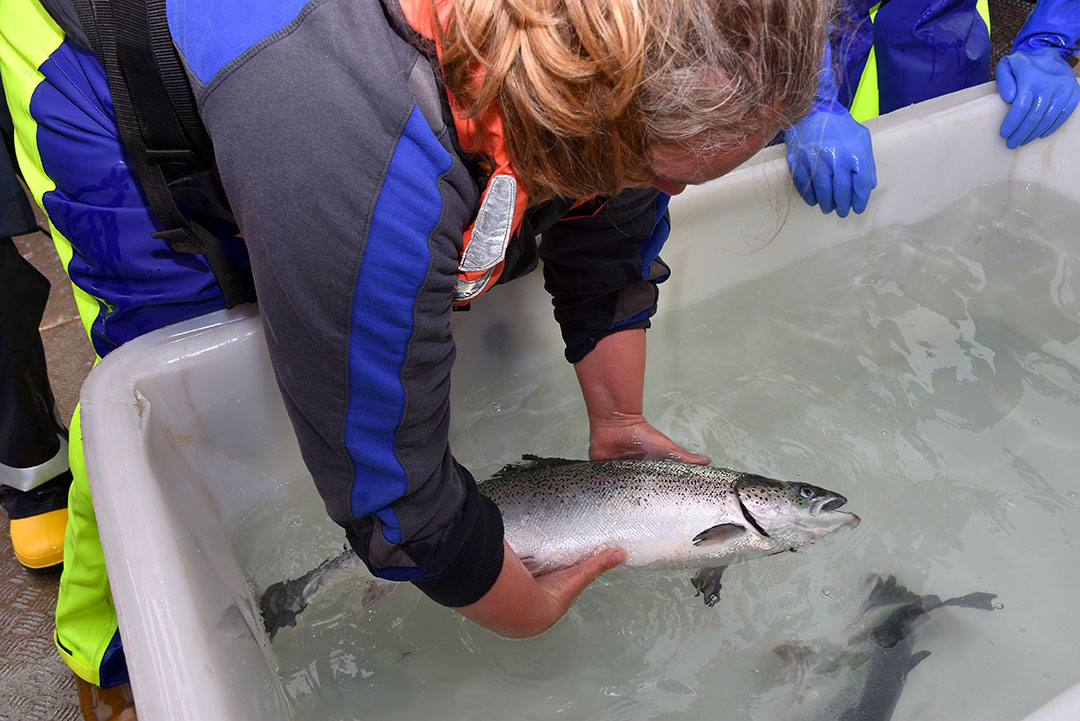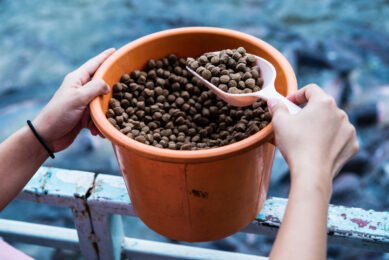Scottish salmon: Feed costs are 50% of total costs

Farming salmon is quite a lucrative business across Scotland producing over 150,000 tonnes of the popular fish each year worth over £1 billion (€ 1.12 billion).
Exports of salmon from Scotland totalled around £500million (€ 562 million) in 2018 with France and Ireland being the biggest customers in the European Union and the United States, China, Japan and Taiwan also significant customers. The distinctive flavour of salmon is a preferred choice of many seafood consumers as it has its own set of nutritional benefits including Omega-3 fatty acids, vitamin B, potassium and selenium.
Prestigious Label Rouge quality mark
There are a number of salmon producers operating in Scotland and one of the bigger operations is the Norwegian owned Scottish Sea Farms. With 45 fish farms in production along Scotland’s west coast and isles this company produced 27,500 tonnes of salmon in 2018 helping boost a turnover of £200million (€ 225 million), £90.7million (€ 102 million) of which were generated from export sales. Scottish Sea Farms produces salmon for the Marks & Spencer Lochmuir Salmon brand and has the prestigious Label Rouge quality mark granted by the French Ministry of Agriculture.

Each farm uses up to 10 three-ring, fully decked plastic circles, between 80 to 100 metres in circumference, and each stocking around 18,000 fish each. There are around 7,500 cubic metres of water in each cage. Staff monitor the fish closely each day, especially at feeding time, with underwater cameras watching out for mortalities and feed efficiency.
In 28 months to optimum weight
From egg to harvest it takes the salmon around 28 months to reach its optimum harvest weight of 5.5kgs which, when gutted, weighs 5.2kgs and sells for £6 (€ 6.75) per kilo. This growing period depends on the customer as some prefer the salmon to be slow growing to gain a more distinctive flavour. The life cycle of the salmon begins when fertilised eggs taken from parent fish are incubated in trays in freshwater hatcheries around December which then hatch from January to the spring time. When the fish are transferred to tanks and start feeding themselves they become known as fry and stay in the freshwater hatchery for about 4 months, during which time they grow to the parr stage. The parr grow quickly up to the end of the winter, and can double their weight in a month. In the spring, the parr change, taking on a silvery blue colour and streamlined shape as they turn into smolts. Smolts are young salmon which are ready to migrate from the freshwater to the marine environment. They have spent between 10 and 16 months in freshwater and it is the time for them to mature in the marine environment.

Expensive salmon feed
When the salmon are harvested they are transported by wellboat just a few short miles to the processing plant. The salmon are filleted, packaged and dispatched from processing stations usually within 2 hours. These wellboats contain large vats of water from which the salmon can actually swim ashore to the processing facility reducing stress and increasing welfare. During the growing stages the salmon are fed from ‘feed barges’ one of which are sited at each farm. The barges hold up to 160 tonnes of feed which contain fish oil, fish meal, proteins and rape. Each barge is stocked by another cargo boat which transports bulk bags of the feed to the feeding station. “This feed is incredibly expensive at around £1,300 (€ 1,462) per tonne,” said David Rea, Scottish Sea Farms regional production director. “Feed costs account for 50% of the production costs. It is fed to the fish via automated systems all linked to a central computer to maximise efficiently and ensure no feed is wasted.”
Sea lice: the biggest threat
One of the biggest threats to farmed salmon is sea lice which can live on the outside of the salmon and can cause significant damage to their skin. There are a number of methods available to tackle sea lice but fish farms are now preferring to use natural treatments rather than chemical medicines and shock treatments. One of the bigger breakthroughs in tackling sea lice is the use of ‘cleaner fish’, most likely wrasse fish, that stay in the cages with the salmon and eat the lice off them.

In the beginning wrasse was taken from the wild but huge efforts of late by the fish farms have been successful in starting to rear wrasse fish themselves. All fish farms accrue some loss and Scottish Sea Farms is no different. However, with good management and close monitoring the company has kept its mortality rate low. Mr Rea added: “Mortalities in fish are gill related. We average around a 93% successful rearing rate from smolt to harvest therefore our mortality rate during this period is around 7%.
“Daily observations of the fish are vital to help us manage the fish and run an efficient rearing programme,” he added.











